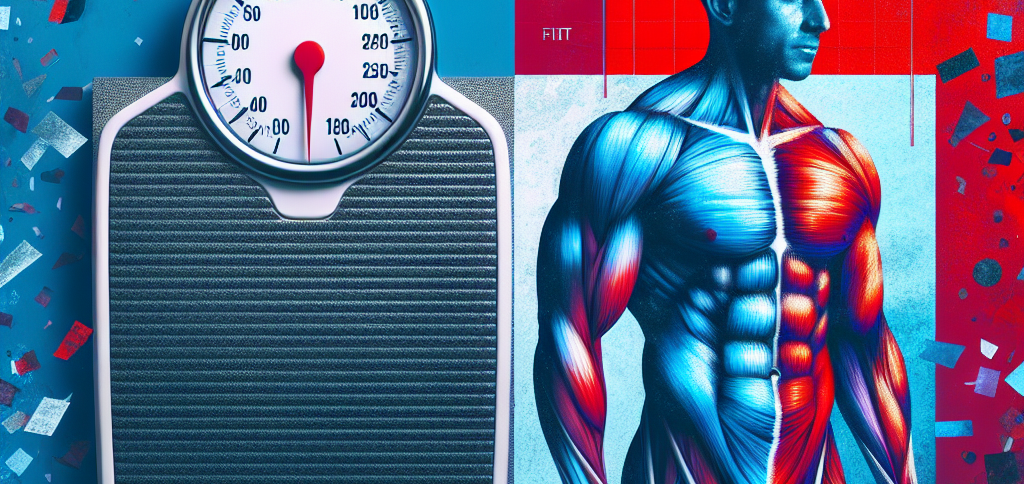When it comes to health and fitness, the terms "fat loss" and "weight loss" are often used interchangeably, but they don’t mean the same thing. Understanding the distinction can make a significant difference in how you approach your fitness journey. Here, we break down the fundamental differences and offer insights on how to focus on fat loss, which is often a more beneficial goal than just losing weight.
1. Defining Weight Loss
Weight loss refers to a decrease in overall body mass. This can include losing fat, water weight, muscle mass, and even bone density. Therefore, someone may lose weight but not necessarily improve their body composition or health.
2. Understanding Fat Loss
Fat loss, on the other hand, specifically targets the reduction of body fat while preserving lean muscle mass. This is crucial for maintaining metabolic health and ensuring the body functions optimally. The goal of fat loss is to achieve a healthier body composition, which often leads to improved physical performance and well-being.
3. The Importance of Body Composition
When we talk about health, body composition becomes a vital aspect to consider. Body composition refers to the different components that make up your body, primarily fat and lean mass. Improving body composition through fat loss helps enhance metabolism, improve physical performance, and reduce the risk of chronic diseases.
4. The Scale Isn’t Always Your Friend
A scale measures total body weight, which can be misleading. An individual might follow a strict diet and exercise regimen and see the numbers on the scale decrease. However, if they are losing muscle or water weight while not reducing fat, their health may not actually be improving. Focusing on fat loss rather than weight loss can tell a different story—instead of obsessing over the scale, consider how your clothes fit and how you feel physically.
5. Different Methods to Achieve Each Goal
The methods for achieving fat loss and weight loss can differ significantly:
For Weight Loss:
- Caloric Deficit: Consuming fewer calories than your body burns.
- Cardio Exercises: Activities that can help burn calories quickly, such as running and cycling.
- Generic Diet Plans: Following fad diets that can lead to temporary weight loss but are not sustainable.
For Fat Loss:
- Balanced Nutrition: Focusing on quality over quantity. Prioritize whole foods rich in nutrients and healthy fats while reducing sugar and processed foods.
- Strength Training: Lifting weights not only helps maintain muscle mass but can also promote fat loss. Muscle burns more calories at rest, making it easier to maintain a caloric deficit.
- Consistency: Building long-lasting habits is vital. A steady approach often leads to sustainable fat loss.
6. The Role of Diet in Fat Loss vs. Weight Loss
Diet plays a crucial role in either case. However, the focus should be different:
- For Weight Loss: Many high-calorie restrictive diets can cause both fat and muscle loss. They might not include essential nutrients your body needs.
- For Fat Loss: A sustainable diet with a mixture of macronutrients (proteins, fats, and carbohydrates) is essential. Protein, for instance, can help preserve muscle during a caloric deficit, facilitating fat loss.
7. Importance of Exercise
Exercise is fundamental, but the type of exercise matters:
- Weight Loss: Engaging mostly in cardio to achieve weight loss might not be enough for fat loss.
- Fat Loss: A blend of strength training, cardio, and flexibility exercises is ideal for achieving fat loss, allowing for a higher proportion of calorie burn from fat rather than muscle.
8. Understanding Metabolism
Metabolism is the biological process that converts food into energy. When aiming for fat loss, it’s essential to support a healthy metabolism:
- High Muscle Mass: Muscle mass can increase your resting metabolic rate, making it easier to burn body fat.
- Nutritional Support: Eating the right nutrients can help regulate metabolism and hormone levels, further aiding fat loss.
9. Setting the Right Goals
When setting fitness goals, consider whether you aim for weight loss or fat loss:
- Health-Based Goals: Aim to improve health markers, boost energy levels, and enhance mood, which often leads to fat loss.
- Physical Appearance Goals: If the goal is to look leaner, focus on fat loss strategies such as eating healthy, strength training, and cardiovascular exercises.
10. The Psychological Aspect
The mental approach to fat loss vs. weight loss differs significantly:
- Weight Loss: Often viewed as a short-term challenge, leading to a yo-yo effect where individuals gain back lost weight.
- Fat Loss: Fosters a mindset that promotes lifestyle changes, encouraging long-term health and wellness rather than temporary fixes.
Conclusion
Emphasizing fat loss over weight loss can lead to a healthier lifestyle and a more sustainable approach to fitness. Aim to improve your body composition by setting realistic, manageable goals that focus on both physical activity and the quality of your diet. This comprehensive approach can help you enjoy a healthier, happier life.
For those curious about effective strategies and tools to achieve fat loss sustainably, Click Here to learn more about resources that can guide you on your wellness journey.






